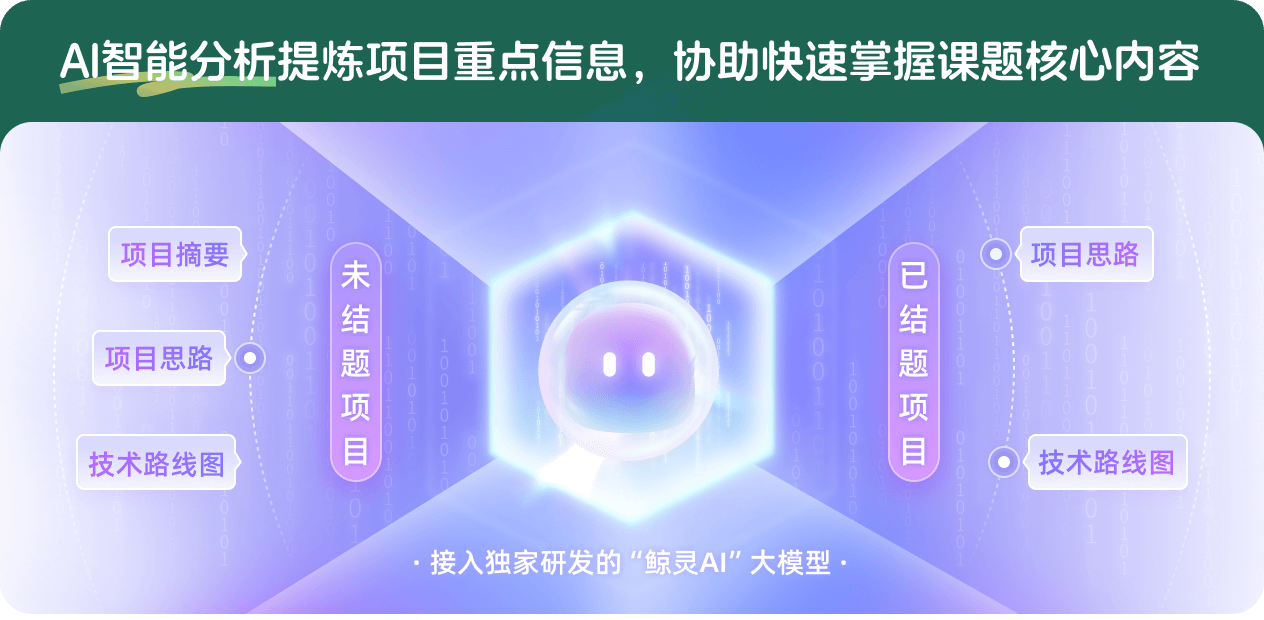基于免疫-超声分离技术的全血样本中目标外泌体的特异性分离、提纯和分析
项目介绍
AI项目解读
基本信息
- 批准号:81801791
- 项目类别:青年科学基金项目
- 资助金额:21.0万
- 负责人:
- 依托单位:
- 学科分类:H2803.生物医学传感
- 结题年份:2021
- 批准年份:2018
- 项目状态:已结题
- 起止时间:2019-01-01 至2021-12-31
- 项目参与者:孙凯; 闫赫; 陈军歌;
- 关键词:
项目摘要
Detection and analysis of exosomes has gained popularity in both life sciences and clinical diagnosis research. To isolate and purify target exosomes from biological samples at high purity and high recovery is an important prerequisite for exosomes-related research. Due to their extremely small size (diameter 40-120 nm), and overlapping in size with other EVs such as microvesicles, exosomes are difficult to isolate and purify. Conventional size-based methods for isolating exosomes, such as ultracentrifugation and filtering, suffer from the disadvantages in low purity and cumbersome and tedious operation, also these methods cannot specifically isolate target exosomes that are related to diseases. Immunoaffinity-based methods such as using magnetic beads with particular antibodies could achieve high specificity and purity, however have low recovery and require additional biological sample pretreatment steps which may introduce contamination and bias. Microfluidics technologies are capable of achieving higher purity and recovery, and shortening the processing time, and thus have been the major force in developing next-generation exosomes isolation technologies. This project proposes a novel immuno-acoustic sorting technology that combines the advantages of highly specific capturing from immunoaffinity and noncontact cell manipulation capability from acoustofluidics, achieved specific isolation, purification, and analysis of target exosomes from whole blood samples without any sample pretreatment steps, and applied this technology to exosomes research of clinical samples from breast cancer patients. The detailed procedures of the proposed method include acoustofluidic plasmapheresis to remove blood cells, and then microparticles with coated antibodies bind with target exosomes in the blood plasma by immunoaffinity, the exosomes-microparticle conjugates are hereby captured, purified and collected for further analysis by acoustofluidics. The proposed immuno-acoustic sorting technology facilitates surface biomarker-based specific isolation through acoustofluidic technology, and holds the promise as a new way of biological sample processing with benefits such as simple operation, good extensibility, and broad applications.
外泌体的检测及分析是近年来生命科学和临床诊断领域的研究热点。将高纯度的目标外泌体从生物样本中分离出来并高效回收是开展外泌体研究的重要先决条件。由于外泌体体积非常小(粒度40-120 nm),其分离和纯化比较困难。常用的超速离心、过滤等基于体积的方法存在分离纯度低、操作复杂费时等缺陷,且没有特异性。基于磁珠免疫吸附的方法特异性强、纯度高,但回收率低,且需要额外的样本预处理环节。微流控技术具有能够取得更高的性能并缩短操作时间等优势,是下一代外泌体分离技术的主要来源。本项目提出一种新型的免疫-超声分离技术,将免疫吸附的特异性与超声微流控的非接触式细胞操控能力结合起来,实现了不需要样本预处理的全血样本中目标外泌体的特异性分离、提纯与分析,并将其应用于临床乳腺癌患者的外泌体研究。具体研究方案是在芯片上集成超声微流控模块进行全血样本中的血浆置换,然后进行抗体微球与血浆中外泌体的特异性结合,接着通过声场力将外泌体-微球复合物从血浆中分离出来并进行清洗、回收。本项目所构建的免疫-超声分离技术能够利用超声场力实现基于表面生物标志物的特异性分离,提供了一种新的生物样本处理范式,并将其应用于临床研究。
结项摘要
细胞外泌体的检测及分析是近年来生命科学和分子诊断领域的研究热点,将高纯度的目标外泌体从生物样本中分离出来并高效回收是分析研究外泌体的重要先决条件。目前常用的外泌体分离方式包括超高速离心、过滤法、化学沉淀法、亲和沉淀法。它们分别存在分离和纯化时间较长,外泌体会有损坏,富集效率较低等问题。超声场力是一种非接触式的场作用力,与细胞体积成正比,这些特点使其被广泛应用于基于体积的细胞分离。我们提出一种新型的免疫-超声分离技术,将抗体微球免疫吸附的特异性与超声微流控的非接触式操控有机结合,实现了针对全血样本的目标外泌体的特异性分离、清洗和回收。该方法实现了无需任何预处理的情况下对全血样本中的目标外泌体进行直接、简便的分离方法,初步实现从病患全血样本中高效提取疾病相关的外泌体并进行分析,为基于外泌体的液体活检与疾病早期诊断和预后监测开辟新的路径。
项目成果
期刊论文数量(3)
专著数量(0)
科研奖励数量(0)
会议论文数量(0)
专利数量(1)
A high-throughput label-free time-stretch acoustofluidic imaging cytometer for single-cell mechanotyping
用于单细胞机械分型的高通量无标记时间拉伸声流成像细胞仪
- DOI:10.1007/s10404-020-02395-7
- 发表时间:2020-10
- 期刊:Microfluidics and Nanofluidics
- 影响因子:2.8
- 作者:Wanyue Zhao;Han Wang;Yingxue Guo;Kai Sun;Zhen Cheng;Hongwei Chen
- 通讯作者:Hongwei Chen
Immuno-Acoustic Sorting of Disease-Specific Extracellular Vesicles by Acoustophoretic Force.
通过声泳力对疾病特异性细胞外囊泡进行免疫声学分选。
- DOI:10.3390/mi12121534
- 发表时间:2021-12-09
- 期刊:Micromachines
- 影响因子:3.4
- 作者:Liu J;Qu Y;Wang H
- 通讯作者:Wang H
A portable sperm cell purification instrument based on continuous flow acoustophoretic separation of sperm cells for on-site forensic sample pretreatment
基于连续流声泳分离精子细胞的便携式精子细胞纯化仪,用于现场法医样品预处理
- DOI:10.1039/d0lc01198c
- 发表时间:2021-03-07
- 期刊:LAB ON A CHIP
- 影响因子:6.1
- 作者:Sun, Kai;Wang, Han;Cheng, Jing
- 通讯作者:Cheng, Jing
数据更新时间:{{ journalArticles.updateTime }}
{{
item.title }}
{{ item.translation_title }}
- DOI:{{ item.doi || "--"}}
- 发表时间:{{ item.publish_year || "--" }}
- 期刊:{{ item.journal_name }}
- 影响因子:{{ item.factor || "--"}}
- 作者:{{ item.authors }}
- 通讯作者:{{ item.author }}
数据更新时间:{{ journalArticles.updateTime }}
{{ item.title }}
- 作者:{{ item.authors }}
数据更新时间:{{ monograph.updateTime }}
{{ item.title }}
- 作者:{{ item.authors }}
数据更新时间:{{ sciAawards.updateTime }}
{{ item.title }}
- 作者:{{ item.authors }}
数据更新时间:{{ conferencePapers.updateTime }}
{{ item.title }}
- 作者:{{ item.authors }}
数据更新时间:{{ patent.updateTime }}
其他文献
Synthesis of cis β-Hydroxy Ketones by Desymmetrization of 1,3- Cyclopentanediones through Ruthenium-Catalyzed Hydrogen Transfer
钌催化氢转移通过 1,3-环戊二酮去对称合成顺式 β-羟基酮
- DOI:10.1002/ajoc.202000121
- 发表时间:2020
- 期刊:Asian J. Org. Chem.
- 影响因子:--
- 作者:王晗;赵洋;丁艺璇;余长斌;周永贵
- 通讯作者:周永贵
并行生成网络的红外-可见光图像转换
- DOI:10.11834/jig.200113
- 发表时间:2021
- 期刊:中国图象图形学报
- 影响因子:--
- 作者:余佩伦;施佺;王晗
- 通讯作者:王晗
储能型准Z源光伏发电系统级联模型预测控制
- DOI:10.13245/j.hust.211214
- 发表时间:2021
- 期刊:华中科技大学学报(自然科学版)科技大学
- 影响因子:--
- 作者:魏祥林;杨维满;王晗;黄苏融
- 通讯作者:黄苏融
干扰素-与白消安合用诱导建立小鼠重型再生障碍性贫血模型的研究
- DOI:--
- 发表时间:--
- 期刊:中华血液学杂志
- 影响因子:--
- 作者:刘海燕;宁方颖;孙峰;王晗;林赠华;陈秀芳;刘红
- 通讯作者:刘红
SIFT与多区域决策融合的车辆行为分析方法
- DOI:--
- 发表时间:2019
- 期刊:江苏大学学报(自然科学版)
- 影响因子:--
- 作者:施佺;孙兵;惠人杰;孙玲;王晗
- 通讯作者:王晗
其他文献
{{
item.title }}
{{ item.translation_title }}
- DOI:{{ item.doi || "--" }}
- 发表时间:{{ item.publish_year || "--"}}
- 期刊:{{ item.journal_name }}
- 影响因子:{{ item.factor || "--" }}
- 作者:{{ item.authors }}
- 通讯作者:{{ item.author }}

内容获取失败,请点击重试

查看分析示例
此项目为已结题,我已根据课题信息分析并撰写以下内容,帮您拓宽课题思路:
AI项目摘要
AI项目思路
AI技术路线图

请为本次AI项目解读的内容对您的实用性打分
非常不实用
非常实用
1
2
3
4
5
6
7
8
9
10
您认为此功能如何分析更能满足您的需求,请填写您的反馈:
王晗的其他基金
基于口腔黏膜的可抛式柔性葡萄糖检测贴片系统
- 批准号:82272121
- 批准年份:2022
- 资助金额:52 万元
- 项目类别:面上项目
相似国自然基金
{{ item.name }}
- 批准号:{{ item.ratify_no }}
- 批准年份:{{ item.approval_year }}
- 资助金额:{{ item.support_num }}
- 项目类别:{{ item.project_type }}
相似海外基金
{{
item.name }}
{{ item.translate_name }}
- 批准号:{{ item.ratify_no }}
- 财政年份:{{ item.approval_year }}
- 资助金额:{{ item.support_num }}
- 项目类别:{{ item.project_type }}




















